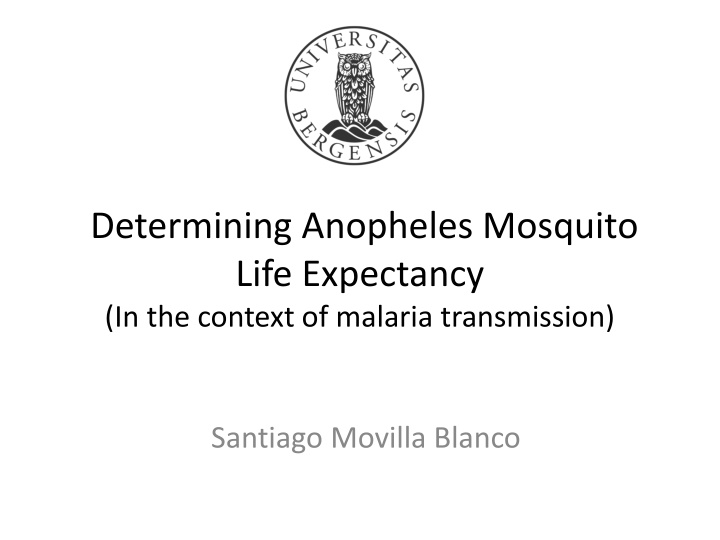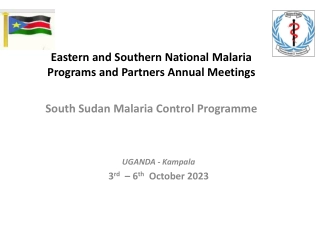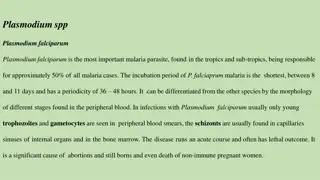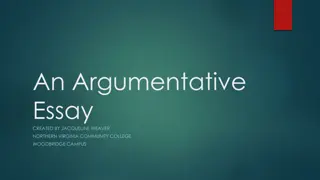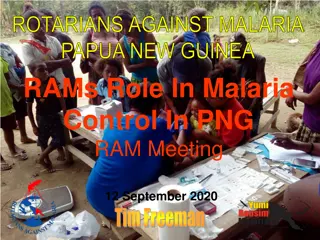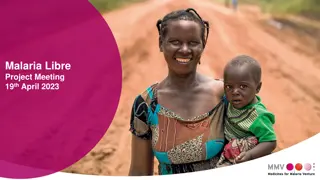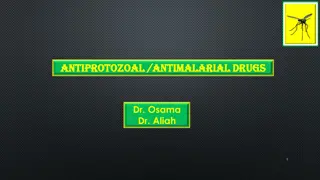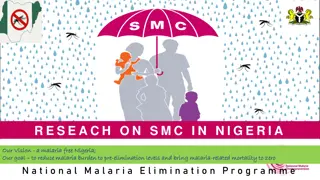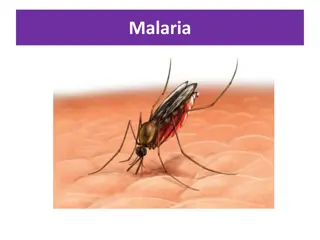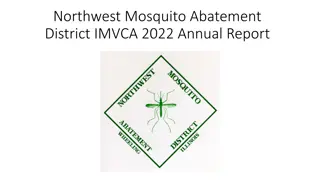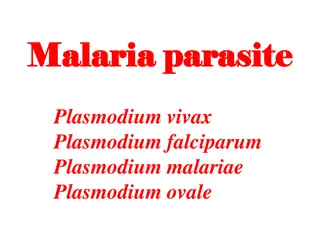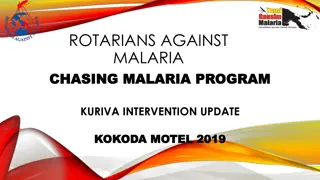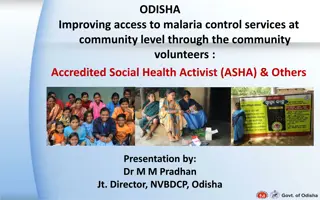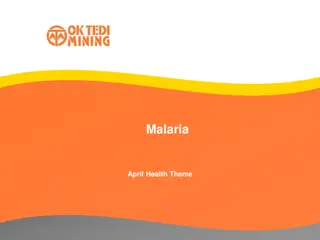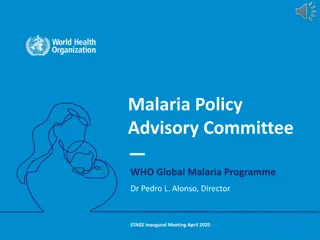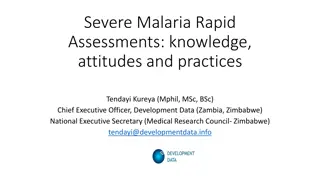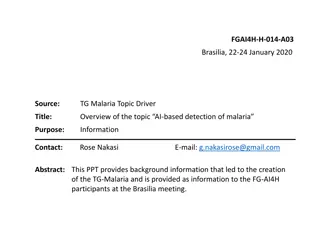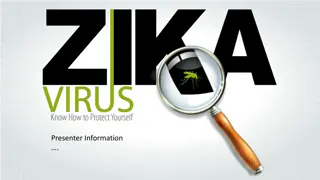Anopheles Mosquito Life Expectancy in Malaria Transmission
Anopheles mosquitoes play a crucial role in malaria transmission, and understanding their life expectancy is essential for effective disease control. This study delves into the significance of mosquito life expectancy, age-dependent mortality, and the implications for infectious mosquitoes. By examining different paradigms and models, the research sheds light on how age influences the life expectancy of mosquitoes and the potential impact on disease transmission dynamics.
Download Presentation

Please find below an Image/Link to download the presentation.
The content on the website is provided AS IS for your information and personal use only. It may not be sold, licensed, or shared on other websites without obtaining consent from the author.If you encounter any issues during the download, it is possible that the publisher has removed the file from their server.
You are allowed to download the files provided on this website for personal or commercial use, subject to the condition that they are used lawfully. All files are the property of their respective owners.
The content on the website is provided AS IS for your information and personal use only. It may not be sold, licensed, or shared on other websites without obtaining consent from the author.
E N D
Presentation Transcript
Determining Anopheles Mosquito Life Expectancy (In the context of malaria transmission) Santiago Movilla Blanco
Table of contents: 1. Why is mosquito life expectancy important? 2. Constant mortality paradigm 3. Age-dependent life expectancy T(x) 4. Average life expectancy of infectious mosquitoes 5. Conclusions
1. Why is mosquito life expectancy important? Ross-Macdonald model
2. Constant mortality paradigm Most vector-borne disease models have with rare exception assumed that vectors die at a constant rate.
2. Constant mortality paradigm Age distribution with constant mortality
2. Constant mortality paradigm Real age distribution, exhibiting age-dependent mortality
3. Age-dependent life expectancy T(x) ( ) AD x = ( ) T x Remaining life expectancy depending on age (x): ( ' ) AD x
3. Age-dependent life expectancy T(x) 1 = = K x ( ) ( ) AD x A e T x Constant life expectancy K + K x 1 1 A e Age-dependent life expectancy = = ( ) 1 ( ) AD x W T x + K x 1 A e K
4. Average life expectancy of infectious mosquitoes Under the constant mortality paradigm, the life expectancy of a mosquito is the same regardless of its age. Adult mosquitoes need an incubation period to develop malaria infectiousness. As a result, infectious mosquitoes are significantly older than the average adult mosquitoes. Therefore, when considering age-dependent mortality, infectious mosquitoes would have a shorter life expectancy.
4. Average life expectancy of infectious mosquitoes Given the age-dependent mortality that determines mosquito deaths in each stock, the life expectancy of infectious mosquitoes depends on how early mosquitoes become infectious. Given a constant mosquito density, the larger the flows, the sooner they become infectious before dying, and the longer they live as infectious mosquitoes.
Factors that make the mosquito infection flow to increase or decrease: -Human prevalence PH -Biting rate BR -Mosquito infectious rate IR
The main factor affecting the flow of mosquitoes becoming infectious is the extrinsic incubation period (EIP), and it is strongly related to temperature.
4. Average life expectancy of infectious mosquitoes Indicators affecting the age at which mosquitos become infectious. Life expectancy of adult mosquitoes. TM Life expectancy of infected mosquitoes. TE Life expectancy of infectious mosquitoes. TI Slow BR = 0.1, IR = 0.072, PH = 2%, EIP = 23 days 17.98 14.54 9.39 Fast BR = 1, IR = 0.64, PH = 50%, EIP = 9 days 17.98 24.53 13.91 ((13.91-9.39)/9.39 = 0.48 = 48% longer life expectancy of infectious mosquitoes in Fast scenario, if compared with Slow scenario.)
5. Conclusions By using mosquito age distributions, we have determined one of the most sensitive and critical indicators for malaria transmission, which is the life expectancy of infectious mosquitoes. We observe that the life expectancy of the infectious mosquitoes depends on the malaria prevalence. The classical assumption where mosquitoes die at a constant rate has led models to overestimate the effectiveness of interventions which reduce the mosquito survival rate. This is because in the age-dependent models, infectious mosquitoes already have a high mortality compared to the rest, and they are less sensitive to further increases of mortality due to malaria control interventions.
Appendix 2: Average life expectancy T(x) T - - - - - - - - - - - - - - - - - - - - - - - - + 1 1 A = = ( ) 1 AD x W T + K x 1 A e W A
